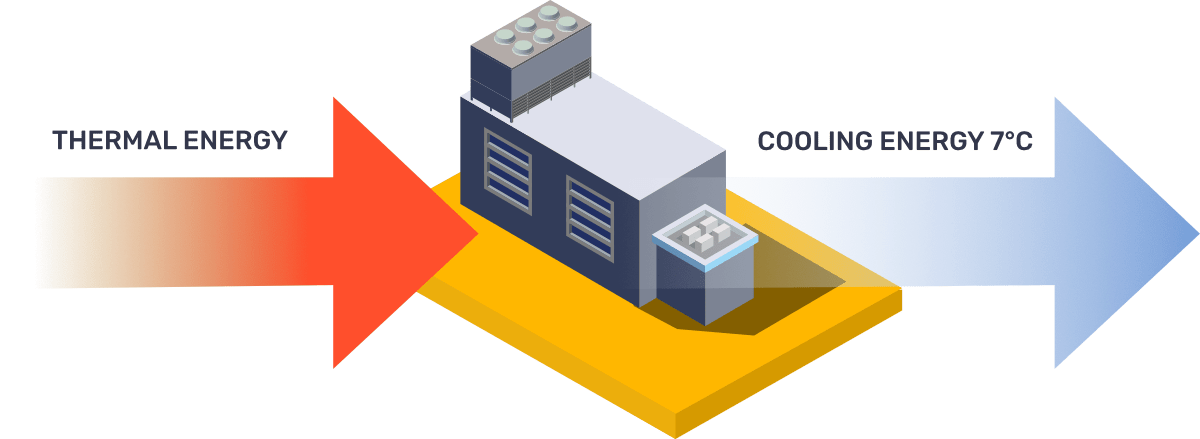When a liquid evaporates, it absorbs heat from its surroundings, for example pouring a drop of alcohol on the hand gives a sensation of cold, in fact the alcohol evaporating absorbs the heat from the hand. The water can evaporate at a very low temperature in vacuum conditions, at 6 mm Hg of pressure in a sealed container, the water evaporates at 4 ° C.
According to the type of machine, the following can be distinguished:
- Direct flame (or direct fueled) machines, in which the thermal source consists of a fuel (in most cases natural gas, or alternatively LPG, biomass or other fuels) which is burned directly in the machine.
- Machines in which the thermal source is a heat transfer fluid (water, diathermic oil, hot fumes, steam) supplied at the appropriate thermal level (indirectly powered machines)
In the case of indirectly powered machines, the systems can be further distinguished based on the origin of the thermal energy that powers the machine:
- thermal energy produced from thermal waste (e.g. thermal recovery from industrial processes) or from renewable energy (e.g. solar thermal energy, geothermal heat);
- thermal energy cogenerated by a prime engine (the heat carrier fluid can consist of water, in liquid or vapor phase, diathermic oil or hot fumes produced by the cogenerator)

Principle of operation
Absorption machines are refrigeration machines that exploit the solubility and high affinity of two substances, one of which acts as a refrigerant and the other as an absorbent, to create a cycle in which the introduction of energy takes place mainly in the form of heat. .
There are two commercially established refrigerant / absorbent combinations:
1) Lithium bromide and water: H2O - LiBr, where water acts as a coolant;
2) Ammonia and water: NH3 - H2O, where the refrigerant is ammonia. Where temperatures are required for systems with negative temperatures.
Request informations
Skills & Services
Innovation for energy and the environment.
In each project we combine the engineering, technical and technological skills of all the member companies.
A Project Manager takes care of all phases of the project: from the initial feasibility study to installation, up to providing a turnkey system, perfectly tested and complete with staff training services and after-sales assistance.
Services
Request information
Contact
ADDRESS
B E E S GROUP ENERGY LLC-FZ
Meydan Grandstand, 6th floor
Meydan Road, Nad Al Sheba
Dubai, UAE
PHONE
+39 334 8520446